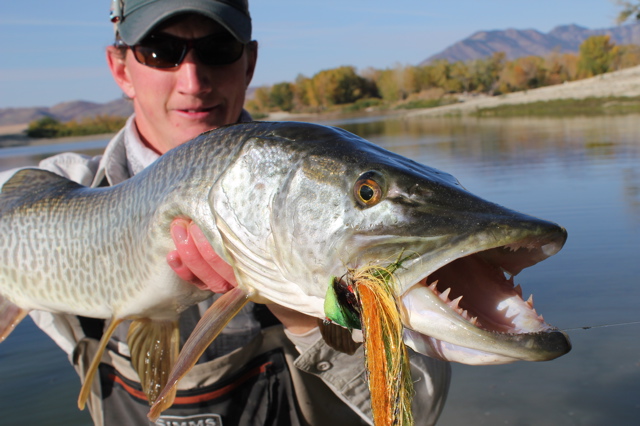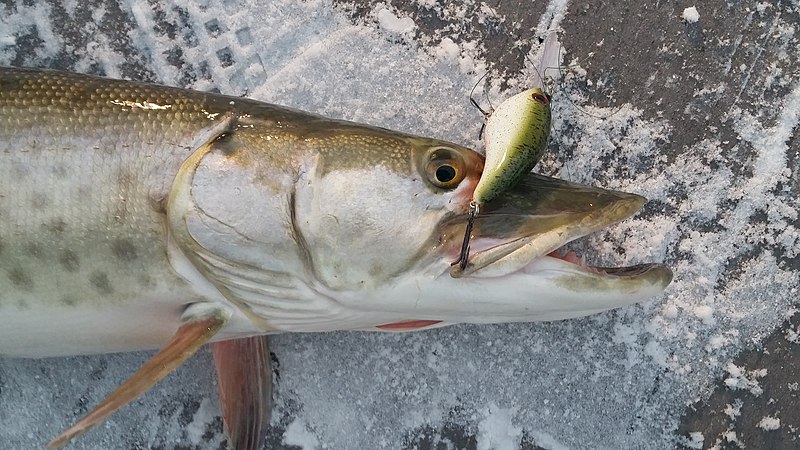This article may contain affiliate links. If you make a purchase after clicking on a link we may earn a small commission at no extra cost to you. As an Amazon Associate, I earn from qualifying purchases.
What do Musky Eat?

Fishing for Musky, also known as muskellunge, is a popular sport among anglers. These large, aggressive fish can provide a thrilling challenge for even the most experienced fishermen. However, in order to successfully catch Musky, it’s important to understand their diet.
Knowing what Musky eat can help anglers choose the right lures and fishing techniques to increase their chances of success. In this article, we’ll provide an overview of Musky’s diet and offer tips for catching these elusive fish.
Musky Diet Overview
Musky are at the top of the food chain in their ecosystem and are considered apex predators. They are known for their large size, aggressive behavior, and ability to hunt down a wide variety of prey.

The Musky’s diet can be influenced by a variety of factors including season, water temperature, availability of prey, and the Musky’s size and age.
Musky are known to eat a wide variety of prey, including fish, amphibians, mammals, and birds. Some of the most common prey for Musky include:
- Panfish: Musky are known to prey on a variety of panfish including bluegills, crappies, and sunfish.
- Perch: Yellow perch are a popular Musky prey, particularly in colder water.
- Walleye: Walleye are a favorite Musky meal, particularly in lakes and rivers with a strong walleye population.
- Trout: Musky are known to eat both rainbow and brown trout.
- Bass: Both largemouth and smallmouth bass can be found on the Musky menu.
Lesser known food sources:
- Frogs: Musky are known to eat both frogs and tadpoles.
- Salamanders: Some Musky anglers swear by using salamander-imitating lures to catch these fish.
- Muskrats: Muskrats are a common Musky prey item, particularly in the fall when the Musky are preparing for winter.
- Mice: Small mammals like mice can also be on the Musky menu.
- Ducks: Musky have been known to eat ducks, particularly ducklings.
- Gulls: In some lakes, Musky have been observed eating seagulls that land on the water’s surface.
Overall, Musky are opportunistic feeders and will eat almost anything that they can catch and swallow. Anglers should take into account the specific prey items in the body of water they are fishing when selecting their lures and techniques.
Choosing the Right Lures
One effective strategy for selecting lures is to match the hatch. This means choosing a lure that looks and moves like the Musky’s natural prey in the body of water you are fishing. For example, if the Musky in your lake are feeding on perch, choose a perch-colored lure that mimics the movements of a live perch.
Musky are known to be attracted to lures that mimic the movements of their prey. This can include lures that create a side-to-side wobble or those that imitate the erratic movements of a wounded baitfish.

Musky are attracted to bright colors, particularly in murky or stained water. Brightly colored lures, such as those with fluorescent hues, can help attract Musky to your line. In clear water, more natural colors like greens, browns, and blues can be effective.
When selecting lures, it’s important to consider the water conditions, time of day, and season. Experiment with different lures and techniques until you find what works best for the Musky in your body of water.
Fishing Techniques
Musky can be found in a variety of locations including weed beds, rocky points, drop-offs, and other underwater structures. Look for areas with good cover and plenty of prey. Musky are also known to follow schools of baitfish, so pay attention to any activity on the surface of the water.
Presentation techniques:
- Jerkbaits: Jerkbaits are a popular lure choice for Musky anglers. These lures are designed to mimic the movement of a wounded baitfish and can be worked in a variety of ways, including a slow and steady retrieve or a series of quick jerks followed by a pause.
- Topwater baits: Topwater baits are effective for Musky, particularly in the early morning and late evening when the water is calm. These lures can be worked with a steady retrieve or a series of quick jerks to create a splashing or popping noise that attracts Musky.
- Bucktails: Bucktails are another popular lure for Musky. These lures consist of a lead head and a skirt made of deer hair or synthetic material. Bucktails can be worked at a variety of depths and are effective for imitating a wide range of prey items.
When presenting your lure, vary your retrieval speed and technique until you find what works best for the Musky in your body of water. Musky can be finicky and may require a specific presentation to trigger a strike.
Conclusion
In conclusion, understanding what Musky eat is crucial for successful fishing. Musky are apex predators that will eat a wide variety of prey including fish, amphibians, mammals, and birds.
Anglers should take into account the specific prey items in the body of water they are fishing when selecting their lures and techniques. Matching the hatch, mimicking the prey’s movement, and choosing the right color can all be effective strategies for selecting lures.
When presenting your lure, vary your retrieval speed and technique until you find what works best for the Musky in your body of water. With the right approach and a bit of patience, you’ll be well on your way to catching these elusive and exciting fish.
